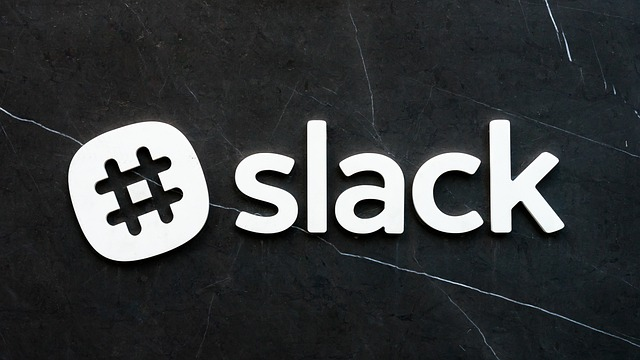As businesses adapt to the increasing trend of remote work, project management for remote teams has become a vital skill for ensuring successful collaboration and project completion.
Remote project management involves overseeing, organizing, and coordinating tasks and resources within a team that is spread across different locations or working remotely. It is essential to understand how to effectively manage and implement strategies for such teams in order to achieve the desired outcomes.
One of the key aspects of remote project management is the ability to maintain strong communication and collaboration among team members who are not co-located. By leveraging technology and adopting best practices, remote project managers can ensure that their teams stay connected, engaged, and productive, ultimately contributing to the successful delivery of projects.
Key Takeaways
- Remote project management involves overseeing teams that work in different locations or remotely
- Effective communication and collaboration are crucial for the success of remote project teams
- Leveraging technology and adopting best practices can help remote project managers maintain productivity and achieve desired outcomes.
What Is Remote Project Management?

You may find yourself working with or leading a project team that is distributed across various locations – this is where remote project management comes into play.
Remote project management is the process of coordinating, planning, and executing projects with a remote project team. These teams can be made up of employees working from home, shared offices, or even different countries.
According to Yesh Quijano from SEO Expert Philippines, “managing remote teams can be challenging due to the nuances of distance and varied time zones. However, with deliberate communication strategies and with the help of project management tools, working remotely can lead to higher levels of productivity and team cohesion.”
Your Role As Project Manager
Your role as a remote project manager involves the same responsibilities and principles as traditional project management, such as defining project scope, creating plans, and monitoring progress.
However, you must adapt your approach to manage the unique challenges that come with working remotely.
One of these challenges is effective communication. You need to establish clear communication channels to ensure your remote teams collaborate efficiently and work towards a common goal. Remote collaboration tools and applications, such as messaging platforms and video conferencing software, can significantly aid this process.

Another critical aspect of remote project management is setting up a robust organizational structure for your project. This includes assigning roles and responsibilities, setting deadlines, and monitoring progress. One way to achieve this is by using remote project management tools that help you track tasks, allocate resources, and ensure that everyone is aligned throughout the project.
As a remote project manager, fostering a strong team culture and maintaining team morale is essential. This can be done by creating opportunities for team members to get to know each other, celebrating accomplishments, and providing regular feedback on performance.
Ultimately, your success in managing remote projects relies on your ability to adapt traditional project management practices to the unique needs of remote teams. This includes leveraging technology and embracing a flexible approach to communication and collaboration. By doing so, you can ensure that your remote project management efforts lead to successful outcomes, even when your team is spread across multiple locations.
What Are the Benefits of Remote Project Management

Enables Simple Planning and Task Delegation
Remote project management allows you to effectively plan and delegate tasks to your team members.
With the help of project planning tools, you can easily assign tasks to remote workers and monitor their progress. This ensures that every team member is aware of their responsibilities and deadlines, regardless of their location. In addition, the use of such tools often leads to better task management and improved productivity.
Reduces Overhead Costs
Transitioning to remote project management can significantly reduce your company’s costs. By allowing your team members to work remotely, you can save on office space, utilities, and other expenses associated with maintaining a physical work environment.
According to the Project Management Institute, around 65 percent of workers predict their offices will go fully virtual within the next few years, highlighting the potential cost savings for businesses.
Creates Healthy Work-Life Balance
One of the key benefits of remote project management is the enhanced work-life balance it offers to your team members. When employees have the flexibility to work from home or choose their work hours, they are in a better position to manage their personal and professional lives. This can lead to reduced stress and staff turnover, creating a more satisfied and motivated workforce.
Creates an Environment for Transparent Communication and Feedback
Remote project management relies heavily on effective communication. By utilizing communication tools and direct messaging (DM-ing), you can establish an environment that encourages open and transparent feedback between team members and project managers.
This, in turn, leads to better decision-making, collaboration, and overall project success. Remember, finding the right communication tool is crucial to achieving seamless team collaboration and overcoming challenges associated with remote work.
Disadvantages of Remote Project Management

There Is a Learning Curve
As a project manager, you may find handling remote teams to be different from managing projects in a co-located space. Adapting to remote project management is a learning process, which may include familiarizing yourself with new software and business processes.
Moreover, your team members may also need to learn new tools and adapt to different communication styles. This learning curve can slow down the initial progress of your project, especially if it involves complex tasks like software development or user interface design.
So, it’s really crucial to be patient and provide adequate support to your remote team members during this period.
Certain Problems Can Be More Challenging to Solve
In remote projects, it can be more challenging to address certain issues when team members are not physically present. For example, real-time collaboration may suffer when your team is dispersed across multiple time zones.
Scheduling meetings, brainstorming sessions, and progress reviews for the whole team can be difficult. Additionally, there may be fewer opportunities for spontaneous communication, which can sometimes lead to miscommunication or delayed problem-solving.
Employee Development Is a Whole New Ball Game
Remote project management can also impact employee development. In traditional office settings, it’s easier to monitor and provide feedback to your team members on their performance.
However, when managing remote teams, you’ll need to find new ways to track their progress and offer constructive feedback. It might be more challenging to identify areas where your team members need support or further training.
Building Trust and Culture Indoctrination Can Be Difficult
Another disadvantage of managing remote teams is the challenge of building trust and promoting a cohesive company culture among team members. In a co-located environment, it’s easier to establish bonds and create a shared understanding of company values and goals.
On the other hand, remote employees often miss out on in-person interactions and may feel disconnected from the team.
As a project manager, it’s essential to develop virtual strategies for fostering trust and a sense of belonging among your team members. This might involve regular check-ins, virtual team-building activities, and embracing company culture in digital communications.
Types of Remote Project Teams

When managing a remote project, it’s essential to understand the different types of remote teams. In this section, we’ll discuss three common remote team configurations: Fully Remote Teams, Hybrid Teams, and Flexible Teams.
Fully Remote
A Fully Remote Team is a project team where all team members work remotely from various locations. This kind of team setup is often found in organizations that have embraced the remote work culture entirely. It requires a robust infrastructure and communication strategy to ensure seamless collaboration.
With a fully remote team, you have the advantage of leveraging talent from a wider geographical pool. However, it also comes with the challenge of managing different time zones and fostering team cohesion.
Hybrid Teams
Hybrid Teams are a mix of remote and on-site team members. This means some members work from a central office, while others work remotely. Hybrid teams are increasingly popular as they offer flexibility to employees and enable companies to tap into the benefits of both remote and traditional work settings.
To manage a hybrid team effectively, it’s crucial to establish clear communication channels and ensure that both remote and office-based team members have equal access to resources and opportunities. Additionally, scheduling regular virtual meetings and face-to-face events can strengthen team bonds and improve collaboration.
Flexible Teams
Flexible Teams are a variation of remote project teams where team members have the option to choose their work location and schedule. This may include working at home, at an office, or a blend of both, depending on their preferred work style. Flexible teams promote healthy work and work-life balance and employee satisfaction, allowing team members to work in an environment that suits their needs
However, managing flexible teams also requires a strong communication plan and collaboration software that cater to this diverse work arrangement. Implementing regular check-ins and project updates can help ensure a smooth workflow and keep everyone in the loop.
How To Create, Manage, and Thrive with A Remote Project Team

Step 1: Define the Team Structure and Work Expectations
It’s crucial to define the team’s structure and work expectations. This helps ensure that everyone understands their roles, responsibilities, and the ultimate goal of the project.
Begin by outlining each member’s project management responsibilities, the project’s scope, and the specific deliverables. Set clear expectations for work hours, availability, and response times. Establishing a solid foundation at this stage will make it easier to manage projects and keep the team on the same page.
Step 2: Define Communication Expectations
With remote project management, communication is key. Clearly define the communication expectations and tools you will be using throughout the project.
Choose a communication tool that meets your team’s needs, such as DM-ing, video conferencing, or a collaboration platform. Setting up regular meetings or check-ins will promote better communication and ensure everyone is informed about the project’s progress and any issues that arise.
Step 3: Choose a Project Management Methodology
Select a project management methodology that best fits your project’s requirements and your team’s preferences. There are several methodologies to choose from, such as Agile, Scrum, Waterfall, or Kanban.
Whichever method you choose will inform the way you plan, execute, and manage your remote project, streamlining your business processes and making it easier to adapt to changes.
Step 4: Plan and Schedule the Project Using a Project Management Tool
Effective project planning and scheduling are the backbone of successful remote project management. Utilize project management software to create a clear team plan and schedule tasks in a way that is easy to monitor and update.
Project planning tools, such as Gantt charts, can help you visualize the project’s timeline and dependencies while keeping track of potential delays or issues.
Step 5: Communicate and Problem-Solve Using Collaboration Software
Managing remote projects requires seamless collaboration across the team. Equip your team with the right collaboration tools to facilitate information exchange, problem-solving, and decision-making.
Implement a file-sharing platform to make it easy for team members to access and share important documents and resources. Encourage open communication and invest in a variety of tools to promote efficient teamwork, including video conferencing, group chat, and real-time editing capabilities.
Remember to keep the tone of communication confident, knowledgeable, neutral, and clear to ensure that your remote project team thrives and the project progresses smoothly.
Best Remote Project Management Tools
In today’s world of remote work, it’s essential to have the right tools to effectively manage your projects and keep your team organized. The following remote project management tools will help you stay connected, track progress, and collaborate efficiently with your team.
Google Workspace

Google Workspace is an all-in-one solution for remote teams. With a suite of collaboration tools like Google Docs, Sheets, Slides, and Calendar, you and your team can easily create, edit, and share project data in real-time. The user-friendly interface enables quick access to essential project management features, ensuring that all team members stay on the same page.
Slack

Slack is a powerful messaging app designed for remote collaboration. As a project management tool, Slack helps remote workers stay connected through DMs, group channels, and video calls. Integrations with popular project management software like Trello and Asana allow you to seamlessly track progress, manage tasks, and share updates within a single platform.
Trello
Trello is an online project management tool that helps your entire team plan, manage, and track projects using visual boards, lists, and cards.
With a simple, intuitive user interface, Trello is ideal for online collaboration, allowing team members to stay updated on project tasks, deadlines, and progress. Plus, with numerous third-party integrations, you can easily connect Trello to other collaboration tools like Slack, Google Workspace, or Microsoft Teams.
ProjectManagement
ProjectManagement offers a range of project management tools for remote teams, including project scheduling, time tracking, and resource management features.
The software’s collaboration tools allow for easy communication and file sharing, ensuring that all team members are kept in the loop. With customizable reports and analytics, you can gain valuable insights into your project’s progress and make data-driven decisions to optimize your team’s performance.
Teamwork
Teamwork is a comprehensive project management software designed to help remote teams work together more effectively. With features such as task assignment, project planning, and progress tracking, Teamwork ensures that your entire team stays on track and focused on the same objectives.
Integrated communication tools like direct messaging, group chats, and sharing files allow for seamless remote collaboration, all within one user-friendly platform.
Wrapping Up
Remote project management enables you to connect with your team members located in different geographical locations and deliver projects effectively. Many project management tools like monday.com aid remote teams to streamline their work effortlessly.
Virtual project management comes with its challenges, such as limited spontaneous communication. However, this can be resolved by adopting best practices and adjusting your management style. Implementing tools like GoodDay for work scheduling and communication is beneficial.
Make sure to explore available remote project management techniques, which will enable you to lead successful remote teams. Don’t be afraid to seek advice or continuously learn from others, as this dedication to improvement will keep you ahead in your field.
Frequently Asked Questions
How do I effectively lead a remote project team?
Establish clear roles and responsibilities for each team member. Regularly hold team meetings and check-ins to ensure progress and address any challenges. Use remote project management tools to track tasks and set realistic deadlines, ensuring that everyone is on the same page.
How do I ensure clear communication within my virtual team?
Clear communication is vital for a successful virtual team. Establish standard communication channels, such as email, instant messaging, and video calls, to keep the team in sync. Encourage open communication and set expectations for timely responses. Share important information through a centralized platform, making it easily accessible to all team members.
What are the best practices for remote project management?
Some best practices for remote project management include setting clear expectations for team members, leveraging collaboration tools, and establishing well-defined communication protocols.
Also, prioritize regular team meetings to foster teamwork, proactively address potential issues, and consistently monitor project progress. Keep an open, flexible mindset to adapt to any unforeseen challenges that may arise.
How do I maintain productivity and engagement in a remote team setting?
To maintain productivity and engagement, foster a positive remote work culture by offering flexibility and trust.
Encourage team members to maintain a healthy work-life balance. Track deliverables and provide constructive feedback to boost team performance. Use engaging techniques like periodic check-ins, and host informal virtual events to foster camaraderie and maintain morale among your remote team.
Note: All images by pixabay



